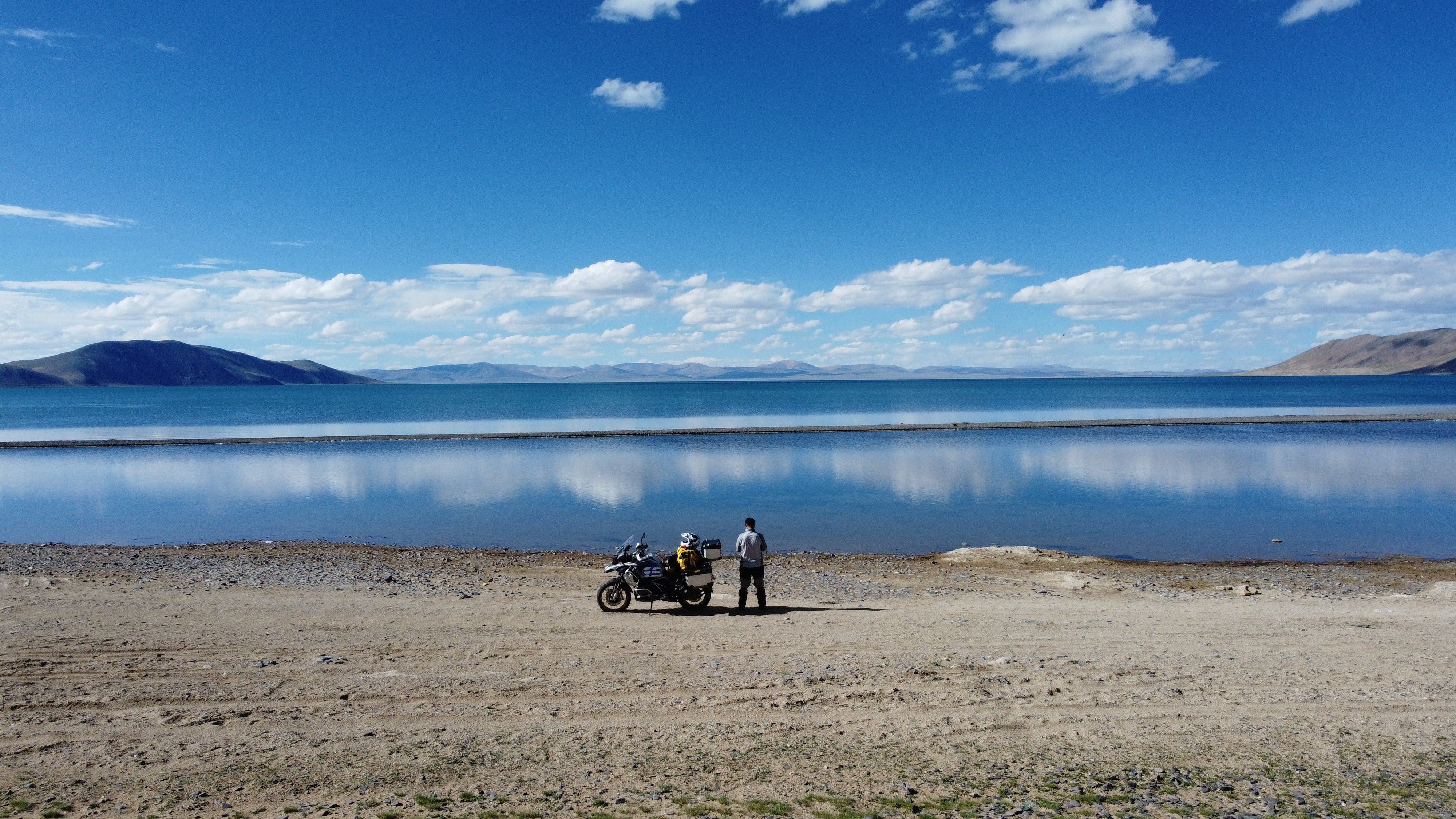
Motorcycle travel is one of the most thrilling and liberating ways to explore the world. The sense of freedom, the closeness to nature, and the adrenaline rush of riding through winding mountain roads or endless highways make it an unforgettable experience. Yet, as exhilarating as motorcycle touring can be, it also comes with challenges and risks. Unlike driving a car, riding a motorcycle requires a higher level of preparation, awareness, and equipment.
If you’re planning your first big motorcycle journey—or even if you’re a seasoned rider looking to refine your approach—this article will walk you through everything you need to know about motorcycle travel. From safety gear and route planning to the often-overlooked but vital role of motorcycle dash cams, you’ll get practical tips and insights to ensure your journey is safe, smooth, and memorable.
1. Preparing Yourself Before the Ride
Before even thinking about your motorcycle, start with yourself. Long-distance rides test your physical stamina, mental focus, and patience. Unlike short commutes, motorcycle touring means spending hours exposed to the elements, facing fatigue, and reacting quickly to changing road conditions.
-
Build your endurance: Take practice rides of increasing distance before embarking on a long tour. This helps your body adjust to the demands of sitting and balancing for extended periods.
-
Stay hydrated and nourished: Carry a hydration pack or frequent water stops. Dehydration leads to fatigue and poor decision-making.
-
Train your mind: Long rides can be mentally draining. Learn to recognize when you’re losing focus and take breaks to recharge.
Your preparation as a rider is just as important as your motorcycle’s condition. A sharp, alert, and healthy rider is the foundation of safe travel.
2. Preparing Your Motorcycle
Your motorcycle is your partner on the road, and taking care of it is critical before starting any long-distance trip. A minor issue ignored before departure can quickly escalate into a serious problem during your journey.
Key things to check include:
-
Tires: Ensure they have sufficient tread and are properly inflated. Uneven wear or low pressure can compromise safety.
-
Brakes: Test both front and rear brakes for responsiveness. Replace worn brake pads immediately.
-
Fluids: Check oil, coolant, and brake fluid levels. Carry small refill containers for emergencies.
-
Chain and sprockets: Lubricate and tighten them to avoid breakdowns on the road.
-
Lights and signals: Working headlights, brake lights, and turn signals are essential for visibility.
-
Battery: A weak battery can strand you far from help. Test and replace if necessary.
Many riders also recommend carrying a basic tool kit and spare parts, like fuses or bulbs, which can save you in remote areas.
3. Safety Gear: Your Personal Armor
Motorcycle gear is more than just fashion—it’s your armor against accidents and harsh weather. Invest in high-quality equipment that fits well and is designed for touring.
-
Helmet: A DOT- or ECE-certified full-face helmet offers maximum protection.
-
Jacket and pants: Opt for abrasion-resistant materials like leather or reinforced textile. Many touring jackets also come with weatherproof liners.
-
Gloves: Reinforced gloves protect your hands in case of falls and provide grip in rain or cold.
-
Boots: Sturdy boots with ankle protection are essential for both safety and comfort.
-
Rain gear: Even if the forecast looks clear, weather can change suddenly on long trips.
Good gear doesn’t just keep you safe—it also reduces fatigue by keeping you comfortable across varying conditions.
4. Planning Your Route
A successful motorcycle trip is a balance of preparation and flexibility. While spontaneity adds adventure, planning ensures safety and efficiency.
-
Research road conditions: Some roads may be under construction, poorly paved, or unsafe for motorcycles.
-
Factor in fuel stops: Motorcycles typically have smaller tanks than cars. Identify gas stations along your route.
-
Weather awareness: Weather apps can help you avoid storms or extreme temperatures.
-
Plan rest stops: Riding too long without breaks increases risk. A good rule of thumb is to rest every 2–3 hours.
-
Accommodation: Decide whether you’ll camp, stay at motels, or book hotels in advance.
Having a GPS system helps, but paper maps are a good backup in case of technology failure.
5. The Role of Technology: Why a Motorcycle Dash Cam is Essential
Among all the gear and gadgets available to riders, one tool is rapidly becoming a must-have: the motorcycle dash cam.
Here’s why dash cams are no longer optional—they’re essential.
5.1 Safety and Evidence
Motorcycles are more vulnerable to accidents than cars, and often riders are wrongly blamed for collisions. A dash cam acts as your silent witness, recording clear evidence in case of disputes.
-
Proves who was at fault in accidents
-
Protects against false insurance claims
-
Provides reliable documentation for legal matters
5.2 Capturing the Journey
Motorcycle travel isn’t just about the destination—it’s about the ride. With front and rear cameras, you can record breathtaking landscapes, thrilling highways, and once-in-a-lifetime moments. Riders often use dash cam footage to:
-
Relive their journeys later
-
Share experiences on social media
-
Create travel vlogs or documentaries
5.3 Night Riding and Weather Challenges
Modern dash cams, such as the HFK Motorcycle Dash Cam, are equipped with features like Sony Starvis night vision and IP67 waterproofing, making them reliable in all conditions—rain, snow, or darkness.
5.4 Advanced Features for Modern Riders
The HFK Dash Cam goes beyond basic recording:
-
Dual cameras for front and rear coverage
-
5G WiFi and GPS for real-time tracking and smartphone connectivity
-
G-sensor to lock critical footage during sudden impacts
-
Ample storage (up to 512GB) for extended journeys
This combination of safety and enjoyment makes it one of the most valuable accessories you can add to your motorcycle.
6. Practical Travel Essentials Beyond Gear
While dash cams and safety equipment are vital, don’t forget about other essentials that make touring more convenient:
-
Storage solutions: Saddlebags, tank bags, and tail bags help carry gear securely.
-
First-aid kit: A small kit with bandages, antiseptic wipes, and pain relievers is essential.
-
Emergency contacts: Keep important numbers handy, including roadside assistance and personal contacts.
-
Portable charger/power bank: Keeps your phone and devices powered during long rides.
-
Snacks and hydration: Energy bars and water can be lifesavers in remote areas.
These items may seem small, but they can make a huge difference on the road.
7. Riding Tips for Long Journeys
Even with the best gear and preparation, your riding habits are what ultimately keep you safe.
-
Maintain safe speeds: Touring is about the experience, not racing.
-
Keep a safe distance: Motorcycles stop differently than cars, so give yourself space.
-
Ride defensively: Always assume drivers don’t see you.
-
Stay visible: Wear reflective gear and keep your headlights on.
-
Listen to your body: If you feel tired, stop. Fatigue is one of the biggest dangers for riders.
Consistency in these habits is what separates a safe journey from a risky one.
8. Stories From the Road: Real-Life Benefits of Dash Cams
Many riders who initially saw dash cams as “just gadgets” now consider them indispensable. For instance:
-
Case 1: A rider in heavy rain was sideswiped by a car. Thanks to his dash cam, the driver’s fault was clearly documented, saving him from a costly dispute.
-
Case 2: Another rider recorded breathtaking footage of riding along the Pacific Coast Highway, which later became the highlight of his travel vlog.
-
Case 3: In a minor collision, a dash cam’s G-sensor automatically preserved the clip, which proved invaluable in resolving the insurance claim.
These real-world stories highlight just how crucial dash cams are—not just for safety but also for capturing the joy of riding.
9. Common Mistakes to Avoid in Motorcycle Travel
Even experienced riders sometimes overlook important details. Avoid these common pitfalls:
-
Overpacking your bike, making it unbalanced
-
Ignoring weather forecasts and getting caught in storms
-
Riding too long without breaks
-
Skipping motorcycle maintenance before departure
-
Forgetting to check dash cam storage space before the ride
Small oversights can lead to big problems on the road, so plan carefully.
Conclusion: Make Every Ride Safe and Memorable
Motorcycle travel is about adventure, freedom, and the open road—but it also demands responsibility. From preparing your body and your bike to wearing the right gear and planning smart routes, every detail matters.
And among all the accessories available today, the motorcycle dash cam stands out as one of the most important investments you can make. It not only safeguards you with critical evidence in accidents but also allows you to relive and share the beauty of your journey.
Whether you’re embarking on a weekend getaway or a cross-country adventure, remember: safety and memories go hand in hand. Equip yourself wisely, ride with awareness, and let tools like the HFK Motorcycle Dash Cam become your trusted partner on the road.


分享:
Motorcycle Dash Cam: Essential Gear for Safe Riding
Why Are More People Choosing Long-Distance Motorcycle Travel? Is It Safe?